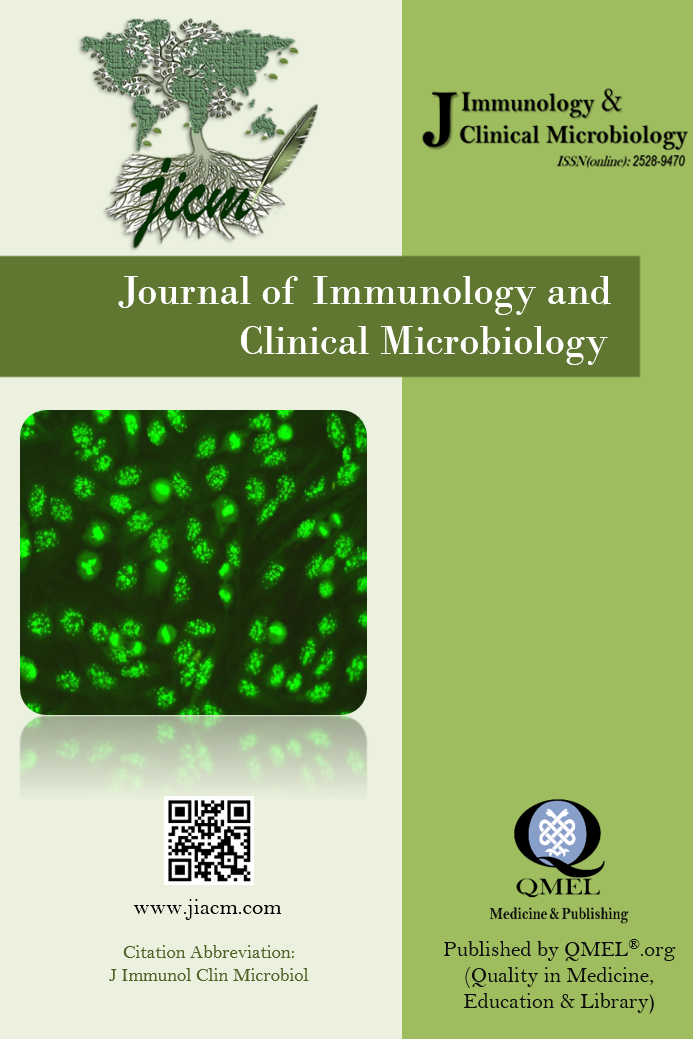Barsak Mikrobiyotasının Nörodejeneratif Hastalıklar Üzerindeki Patofizyolojik Rolü
Alzheimer, Nöroinflamasyon, Mikrobiyota, Parkinson
Pathophysiologic Role of Intestinal Microbiota on Neurodegenerative Diseases
Alzheimer, Neuroinflammation, Microbiota, Parkinson,
___
- Morgan XC, Segata N, Huttenhower C. Biodiversity and functional genomics in the human microbiome. Trends in genetics. 2013;29(1):51-8.
- Gill SR, Pop M, DeBoy RT, Eckburg PB, Turnbaugh PJ, Samuel BS, et al. Metagenomic analysis of the human distal gut microbiome. Science. 2006;312(5778):1355-9.
- Flint HJ, Duncan SH, Scott KP, Louis P. Interactions and competition within the microbial community of the human colon: links between diet and health. Environmental microbiology. 2007;9(5):1101-11.
- Walker AW, Ince J, Duncan SH, Webster LM, Holtrop G, Ze X, et al. Dominant and diet-responsive groups of bacteria within the human colonic microbiota. The ISME journal. 2011;5(2):220-30.
- Zhu X, Han Y, Du J, Liu R, Jin K, Yi W. Microbiota-gut-brain axis and the central nervous system. Oncotarget. 2017; 10;8(32):53829-53838
- Yatsunenko T, Rey FE, Manary MJ, Trehan I, Dominguez- Bello MG, Contreras M, Magris M, Hidalgo G, Baldassano RN, Anokhin AP, Heath AC, Warner B, Reeder J, et al. Human gut microbiome viewed across age and geography. Nature. 2012; 486:222–227.
- David LA, Maurice CF, Carmody RN, Gootenberg DB, Button JE, Wolfe BE, Ling AV, Devlin AS, Varma Y, Fischbach MA, Biddinger SB, Dutton RJ, Turnbaugh PJ. Diet rapidly and reproducibly alters the human gut microbiome. Nature. 2014; 505:559–563.
- O'Mahony SM, Felice VD, Nally K, Savignac HM, Claesson MJ, Scully P, Woznicki J, Hyland NP, Shanahan F, Quigley EM, Marchesi JR, O'Toole PW, Dinan TG, et al. Disturbance of the gut microbiota in early-life selectively affects visceral pain in adulthood without impacting cognitive or anxiety-related behaviors in male rats. Neuroscience. 2014; 277:885–901.
- Yalçın S.S, Kanatlı M.Ç. İntestinal mikrobiyota transplantasyonu; neden, kime, nasıl? Pamukkale Medical Journal.2015;8(1):148-54.
- Smits LP, Bouter KE, de Vos WM, Borody TJ, Nieuwdorp M. Therapeutic potential of fecal microbiota transplantation. Gastroenterology 2013;145:946-953.
- Westfall S, Lomis N, Kahouli I, Dia SY, Singh SP, Prakash S. Microbiome, probiotics and neurodegenerative diseases: deciphering the gut brain axis. Cell Mol Life Sci. 2017;74(20):3769-3787
- Yılmaz K, Altundiş M. Sindirim sistemi mikrobiyotası ve fekal transplantasyon. Nobel Med.2017; 13(1): 9-15.
- Bravo JA, Forsythe P, Chew MV, Escaravage E, Savignac HM, Dinan TG, Bienenstock J, Cryan JF. Ingestion of Lactobacillus strain regulates emotional behavior and central GABA receptor expression in a mouse via the vagus nerve. Proc Natl Acad Sci U S A. 2011; 108:16050–16055.
- Forsythe P, Bienenstock J. Immunomodulation by commensal and probiotic bacteria. Immunol Invest. 2010; 39:429–448.
- Erny D, Hrabe de Angelis AL, Jaitin D, Wieghofer P, Staszewski O, David E, Keren-Shaul H, Mahlakoiv T, Jakobshagen K, Buch T, Schwierzeck V, Utermohlen O, Chun E, et al. Host microbiota constantly control maturation and function of microglia in the CNS. Nat Neurosci. 2015; 18:965–977
- Barrett E, Ross RP, O'Toole PW, Fitzgerald GF, Stanton C. gammaAminobutyric acid production by culturable bacteria from the human intestine. J Appl Microbiol. 2012; 113:411–417.
- Mandal RS, Saha S, Das S. Metagenomic surveys of gut microbiota. Genom Proteom Bioinform. 2015; 13:148–158.
- Luczynski P, McVey Neufeld K-A, Oriach CS et al (2016) Growing up in a bubble: using germ-free animals to assess the infl uence of the gut microbiota on brain and behavior. Int J Neuropsychopharmacol 19(8):234–248.
- Jyothi HJ, Vidyadhara DJ, Mahadevan A et al (2015) Aging causes morphological alterations in astrocytes and microglia in human substantia nigra pars compacta. Neurobiol Aging 36:3321–3333.
- Sampson TR, Debelius JW, Thron T et al (2016) Gut microbiota regulate motor defi cits and neuroinfl ammation in a model of Parkinson’s disease. Cell. 167.1469–1480
- Poukka H, Karvonen U, Janne OA, Palvimo JJ. Covalent modification of the androgen receptor by small ubiquitin-like modifier 1 (SUMO-1). Proc Natl Acad Sci USA 2000; 97:14145-14150.
- Blandino G, et al. Impact of gut microbiota on diabetes mellitus. Diabetes & metabolism 2016;42(5):303-315.
- Jiang C, Li G, Huang P, Liu Z, Zhao B. The gut microbiota and Alzheimer’s Disease. J Alzheimers Dis. 2017;58(1):1-15.
- Knopman DS. Alzheimer disease: Preclinical Alzheimer disease - the new frontier.Nat Rev Neurol. 2016;12(11):620-621.
- Bruce-Keller AJ, Salbaum JM, Luo M, Blanchard Et, Taylor CM, Welsh DA, Berthoud HR. Obese-type gut microbiota induce neurobehavioral changes in the absence of obesity. Biol Psychiatry. 2015; 77:607–615.
- Willis, A., Evanoff, B.A., Lian, M., Criswell, S.R., Racetta, B.A. Geographic and Ethnic Variation in Parkinson Disease: A Population-Based Study of US Medicare Beneficiaries. Neuroepide. 2010; 4 (3), 143-51.
- Kalia, L.V., Lang, A.E. (2015). Parkinson’s Disease. Lancet, 386 (9996), 896-912
- Olanow, C.W., Brundin, P. Parkinson's Disease and Alpha Synuclein: Is Parkinson's Disease a Prion-Like Disorder? Movement Disorders. 2013; 28(1), 31-4.
- Kelly, L. P. et al. Progression of intestinal permeability changes and alphasynuclein expression in a mouse model of Parkinson's disease. Mov. Disord.2014; 29: 999–1009
- Devos, D. et al. Colonic infl ammation in Parkinson's disease. Neurobiol. Dis. 2013; 50: 42–48
- Olanow, C.W., Kordower, J.H., Lang, A.E., Obeso, J.A. Dopaminergic transplantation for Parkinson’s disease: Current status and future prospects. Annals of Neurology. 2009; 66 (5):591-6
- Yayın Aralığı: Yılda 4 Sayı
- Başlangıç: 2016
- Yayıncı: Erkan YULA
Gülseren YİLMAZ, Ziya SALİHOGLU
Biosafety principles in parasitology laboratories
Abdüssamed AKŞİT, Emrah ERDOĞAN, Serkan KARACA, Bora ÖZKAN, Ahmet GÜRGEL, Merve YÜRÜK, Eda SİVCAN, Bekir TARTICI, Yunus UYAR
Emrah ERDOĞAN, Abdüssamed AKŞİT, Ahmet GÜRGEL, Serkan KARACA, Bora ÖZKAN
Barsak Mikrobiyotasının Nörodejeneratif Hastalıklar Üzerindeki Patofizyolojik Rolü
